|
Cherokee Trail of Tears
| Cherokee Trail of Tears |
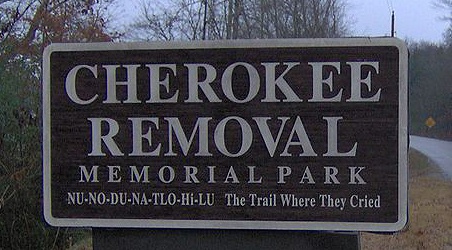
|
| (Historical Marker) |
(Right) Cherokee Trail of Tears Historical Marker: The entrance to the Cherokee
Removal Memorial Park near Blythe's Ferry, one of the trail's departure points.
In 1838, the Cherokee Nation -- with more than 16,000 men, women, and children -- was removed from
their lands in the Southeastern United States to the Indian Territory (present-day Oklahoma) in the Western United States, which resulted in the deaths of approximately
4,000 Cherokees (Oklahoma Territory and Indian Territory). In the Cherokee language, the event is called Nunna daul Isunyi—“the
Trail Where They Cried”.
| High Resolution Map of Cherokee Trail of Tears |
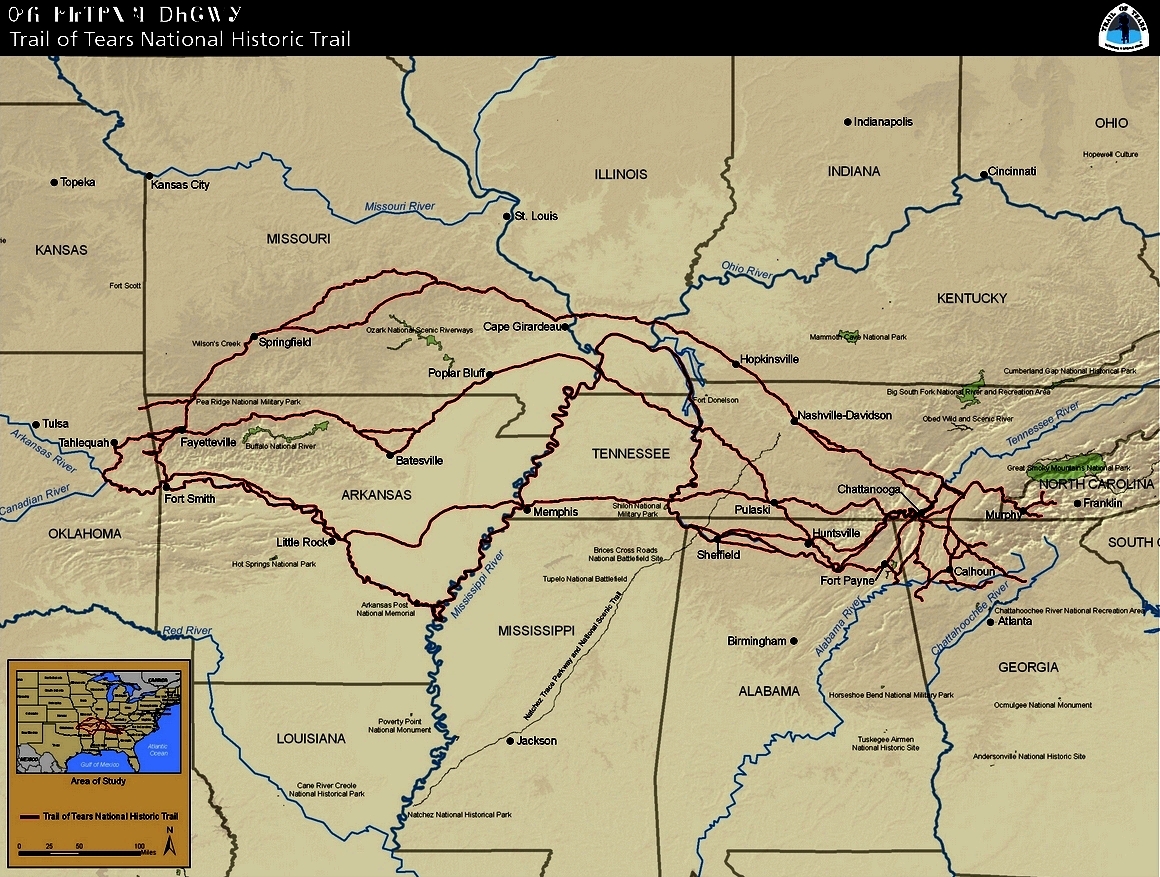
|
| High Resolution Map of Cherokee Trail of Tears. Main routes Cherokee traveled during Trail of Tears. |
| Cherokee Trail of Tears Marker |
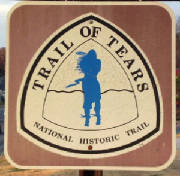
|
| (Hwy 71, Fayetteville, Arkansas) |
Tensions between Georgia and the
Cherokee Nation were brought to a crisis by the discovery of gold near Dahlonega, Georgia, in 1829, resulting
in the Georgia Gold Rush, the first gold rush in U.S.
history. Hopeful gold speculators began trespassing on Cherokee lands, and pressure began to mount on the Georgia government to fulfill the promises of the Compact
of 1802.
(Left) Cherokee Trail of Tears Historical Marker in northwest
Arkansas.
When Georgia moved to extend state laws over Cherokee tribal lands in 1830, the matter
went to the U.S. Supreme Court. In Cherokee Nation v. Georgia (1831), the
Marshall court ruled that the Cherokees were not a sovereign
and independent nation, and therefore refused to hear the case. However, in Worcester v. State
of Georgia (1832), the Court ruled that Georgia could not impose laws in Cherokee territory, since only the national government
— not state governments — had authority in Indian affairs.
"John Marshall has made his decision; now let him enforce it! ... Build a fire under them. When it gets hot enough,
they'll go." —-Andrew Jackson, 1832, The Trail of Tears Across Missouri.
| Cherokee Trail of Tears Map of Routes |
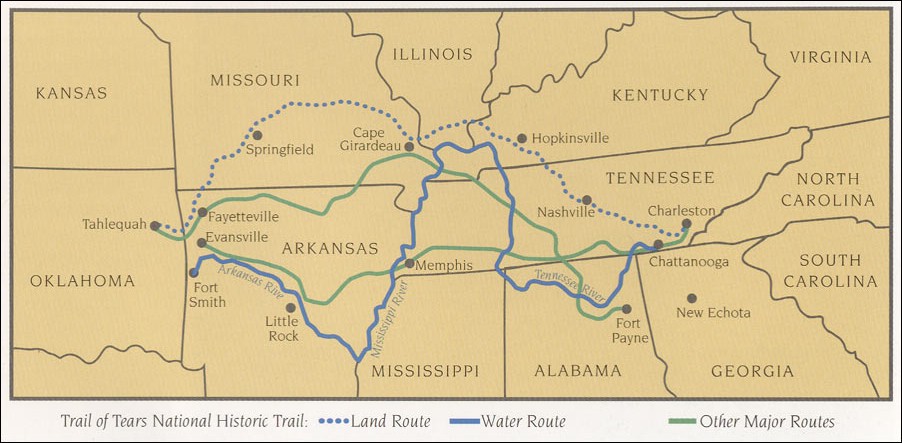
|
| Cherokees and the Route of the Trail of Tears |
(This map shows the routes
followed by the Cherokee Nation to reach "Indian Territory," now the state of Oklahoma, in the 1830s.)
President Andrew Jackson was fully committed to the Indian Removal policy and he had no desire to use the power of the national government to protect the Cherokees from Georgia, since he was already entangled with states’
rights issues in what became known as the Nullification Crisis. With the Indian Removal Act of 1830, the U.S. Congress had given Jackson authority to negotiate
removal treaties, exchanging Indian land in the East for land west of the Mississippi River.
Jackson used the dispute with Georgia
to put pressure on the Cherokees to sign a removal treaty.
| New Echota Historic Site |
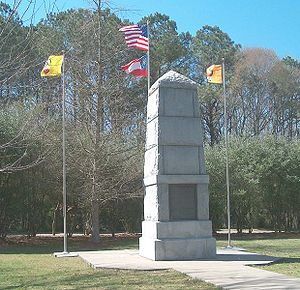
|
| (Honors Cherokee Trail of Tears' Dead) |
With the landslide reelection
of Andrew Jackson in 1832, some of the most strident Cherokee opponents of removal began to rethink their positions. Led by
Major Ridge, his son John Ridge, and nephews Elias Boudinot and Stand Watie, they became known as the “Ridge Party”, or the “Treaty Party” (see Indian Removal: Ridge v. Ross). The Ridge Party believed that it was in the best interest of the Cherokees to get favorable terms from the U.S. government,
before white squatters, state governments, and violence made matters worse.
(Right) This monument at the New
Echota Historic Site honors Cherokees who died on the Trail of Tears.
John Ridge began unauthorized
talks with the Jackson administration in the late 1820s. Meanwhile, in anticipation of the Cherokee removal, the state of
Georgia began holding lotteries in order to divide up the Cherokee tribal lands among white Georgians. However, Principal
Chief John Ross and the majority of the Cherokee people, also known as the Ross Party, remained adamantly opposed to removal.
The 1835 Treaty of New Echota
relinquished all the Cherokee land east of the Mississippi in return for five million dollars to be disbursed on a per capita
basis, an additional half-million dollars for educational funds, title in perpetuity to an amount of land in Indian Territory
equal to that given up, and full compensation for all property left in the East. There was also a clause in the treaty as
signed allowing Cherokee who so desired to remain and become citizens of the states in which they resided on 160 acres of
land, but that was later stricken out by President Jackson.
| Cherokee Chief John Ross |
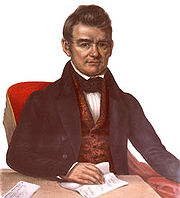
|
| (Principal Chief Ross) |
In the fall of 1835, a census
was taken by civilian officials of the War Department to enumerate Cherokees residing in Alabama, Georgia, North Carolina,
and Tennessee: The 1835 Census of the Cherokee Nation, East (not including the
Oconaluftee Cherokee under Chief Yonaguska in Haywood County, North Carolina, who were considered citizens of that state) showed—Georgia: 8946 "Indians", 776
slaves, 68 whites; North Carolina: 3644 "Indians", 37 slaves, 22 whites; Tennessee: 2528 "Indians", 480 slaves, 79 whites;
and Alabama: 1424 "Indians", 299 slaves, 32 whites. This made a total of 16,542 "Indians", 1592 slaves, and 201 inter-married
whites living in the Cherokee Nation East, for a grand total of 18,335 persons overall. This total includes 376 Muscogee living
in the Cherokee Nation East, since the Creek War. The estimated number of Cherokee in the West was about 5000.
In October of that year Principal
Chief John Ross and an Eastern visitor, John Howard Payne, were kidnapped from Ross' Tennessee home by a renegade group of
the Georgia militia. Released, Ross and a delegation of tribal leaders traveled to Washington, D.C., to protest this high-handed
action, and to lobby against the removal policy of President Andrew Jackson. In this power vacuum, U.S. Agent John F. Schermerhorn
gathered a group of dissident Cherokees in the home of Elias Boudinot at the tribal capitol, New Echota, GA. There, on December
29, 1835, this rump group signed the unauthorized Treaty of New Echota, which exchanged Cherokee land in the East for lands
west of the Mississippi River in Indian Territory. This agreement was never accepted by the elected tribal leadership or a
majority of the Cherokee people. In February 1836, two Councils convened at Red Clay, TN., and at Valley Town, N.C., (now
Murphy, N.C.) and produced two lists totaling some 13,000 names, written in the Sequoyah writing script, of Cherokees opposed to the Treaty. The lists were dispatched to Washington, D.C., and presented by Chief
Ross to Congress. Nevertheless, a slightly modified version of the Treaty was ratified by the U.S. Senate by a single vote
in March 1836, and signed into law by President Andrew Jackson. The Treaty provided a grace period until May 1838 for the
tribe to voluntarily remove themselves to Indian Territory.
| Chief John Ross House |
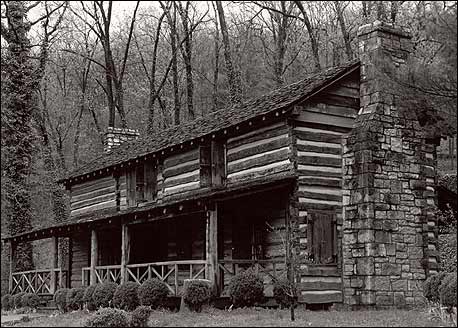
|
| Chief John Ross Home (NPS) |
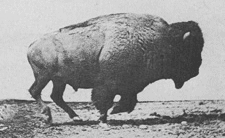
(Right) John Ross House.
This log house is located in Rossville, Georgia, on the Georgia-Tennessee border
near Chattanooga. It consists of two rooms on each floor separated
by a central breezeway, now enclosed, and was built in the 1790s by John Ross's grandfather. Ross lived here with his grandparents
as a boy and the house later served as a headquarters for the enterprises that made him a rich man. The property also included
a large farm, worked by slaves. Ross also owned a supply depot and warehouse at Ross's Landing (now in Chattanooga).
| Major Ridge |
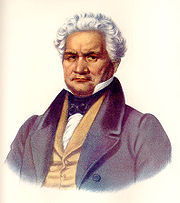
|
Despite the protests by the
Cherokee National Council and Principal Chief Ross that the document was a fraud, Congress ratified the treaty on May 23,
1836, by just one vote. Many white Americans were outraged by the dubious legality of the New Echota Treaty and called on
the government not to force the Cherokees to move. For example, on April 23, 1838, Ralph Waldo Emerson wrote a letter to Jackson’s
successor, President Martin Van Buren, urging him not to inflict “so vast an outrage upon the Cherokee Nation.”
The New Echota Treaty, which passed Congress
by a single vote, and signed into law by President Andrew Jackson, was imposed by his successor President Martin Van Buren
who allowed Georgia, Tennessee, North Carolina, and Alabama an armed force of 7,000 comprised of militia, regular army, and
volunteers under General Winfield Scott to round up approximately 13,000
Cherokees into concentration camps at the U.S. Indian Agency near Cleveland, Tennessee, before being sent to the West. (General Winfield Scott's Address to the Cherokee Nation and General Winfield Scott's Cherokee Indian Removal Enforcement Orders
(The Trail of Tears). Most of the deaths occurred from disease, starvation and cold in these camps. Their homes were burned and their property
destroyed and plundered. Farms belonging to the Cherokees for generations were won by white settlers in a lottery. After the
initial roundup, the U.S. military still oversaw the emigration until they met the forced destination.
Private John G. Burnett later wrote "Future generations will read and condemn the act and I do hope posterity will remember
that private soldiers like myself, and like the four Cherokees who were forced by General Scott to shoot an Indian Chief and
his children, had to execute the orders of our superiors. We had no choice in the matter." (Autobiography of General Winfield Scott: Civilization of the Cherokees:
A History.)
| Major Ridge House |
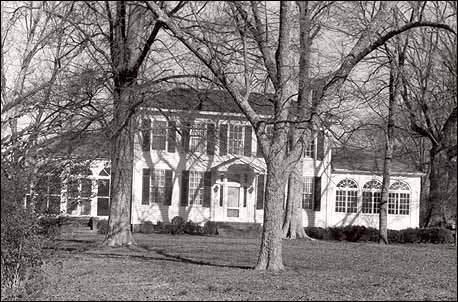
|
| (NPS) |
(Major Ridge House) The Ridge
House is located in Rome, Georgia, near New Echota, the Cherokee
national capital. The two windows to the left of the front door were part of the earliest part of this house, a log cabin
of two rooms separated by an open breezeway. By the time of the relocation, Major Ridge had enlarged the cabin into a fine
house, with eight rooms, 30 glass windows, four brick fireplaces, and paneling in the parlor. The two one-story wings were
added in the 20th century.
| Cherokee Indian Removal Map of Routes |
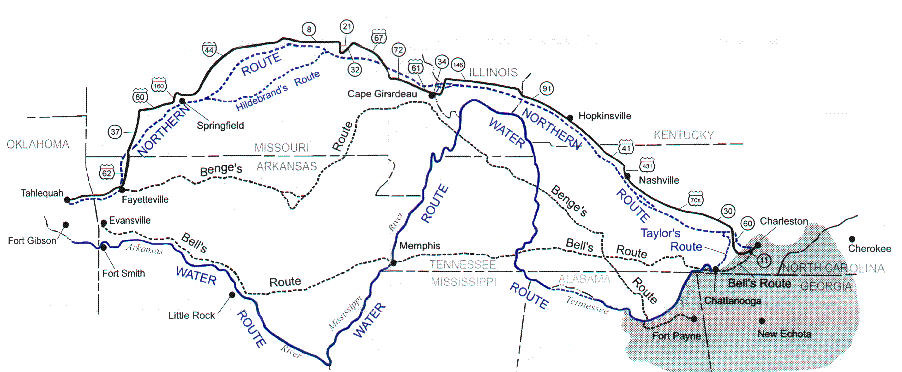
|
| (Cherokee Trail of Tears) |
"I fought through the War Between the States and have seen many men shot, but the Cherokee Removal was the cruelest
work I ever knew." —-Georgia soldier who participated in the Cherokee Removal.
"Long time we travel on way to new land. People feel bad when
they leave old nation. Women cry and make sad wails. Children cry and many men cry, and all look sad like when friends die,
but they say nothing and just put heads down and keep on go towards West. Many days pass and people die very much. We bury
close by Trail." —Survivor of the Trail of Tears.
| Land Route Trail Remnant in Tennessee |
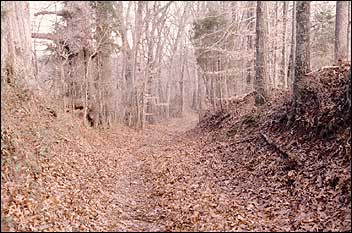
|
| (Tennessee Department of Environment and Conservation) |
In the winter of 1838 the Cherokee
began the thousand mile march with scant clothing and most on foot without shoes or moccasins. (Cherokee Removal Routes Map and Trail of Tears Mapped Routes.) The march began in Red Clay, Tennessee, the location of the last Eastern capital of the Cherokee Nation (Red Clay Council and Red Clay Council Grounds).
The Cherokee were given used blankets
from a hospital in Tennessee where an epidemic of small pox had broken out. Because of the diseases, the Indians were not
allowed to go into any towns or villages along the way; many times this meant traveling much farther to go around them. After
crossing Tennessee and Kentucky, they arrived in Southern Illinois at Golconda about the 3rd of December, 1838. Here, the
starving Indians were charged a dollar a head to cross the river on "Berry's Ferry" which typically charged twelve cents.
They were not allowed passage until the ferry had serviced all others wishing to cross and were forced to take shelter under
"Mantle Rock," a shelter bluff on the Kentucky side, until "Berry had nothing better to do". Many, consequently, died
huddled together at Mantle Rock waiting to cross.
Several Cherokee were also murdered
by locals. The killers filed a lawsuit against the U.S. Government through the court house in Vienna, suing the government
for $35 a head to bury the murdered Cherokee.
On December 26, Martin Davis,
Commissary Agent for Moses Daniel's detachment, wrote: "There is the coldest weather in Illinois I ever experienced anywhere. The streams are all frozen over something
like eight or twelve inches thick. We are compelled to cut through the ice to get water for ourselves and animals. It snows
here every two or three days at the fartherest. We are now camped in Missippi [Mississippi] swamp four miles from the
river, and there is no possible chance of crossing the river for the numerous quantity of ice that comes floating down the
river every day. We have only traveled sixty-five miles on the last month, including the time spent at this place, which has
been about three weeks. It is unknown when we shall cross the river...."
| Trail of Tears |
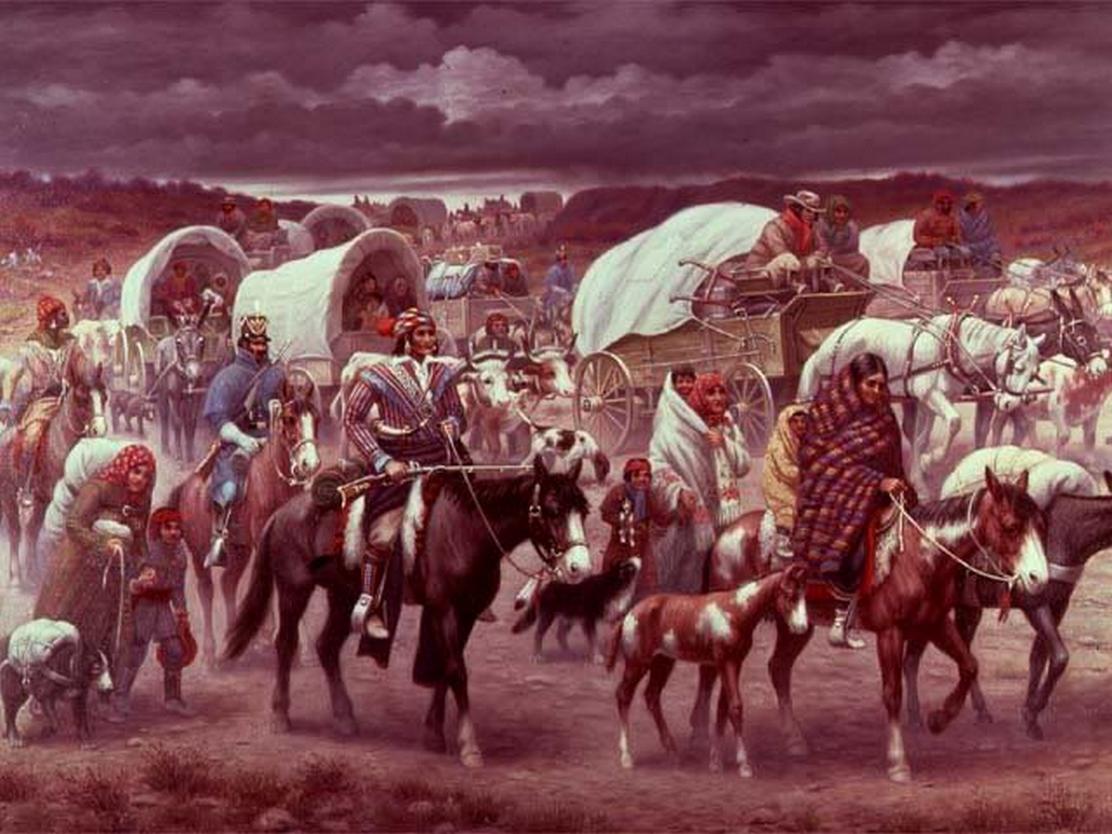
|
| Robert Lindneux painting |
| Chief & General Stand Watie |
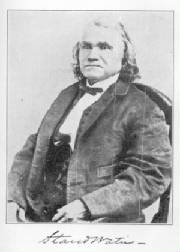
|
| (Cherokee Chief & Confederate General Stand Watie) |
Removed Cherokees initially settled near Tahlequah,
Oklahoma. The political turmoil resulting from the Treaty of New Echota and the
Trail of Tears led to the assassinations of Major Ridge, John
Ridge, and Elias Boudinot; of the leaders of the Treaty Party, only Stand
Watie escaped his assassins. The population of the Cherokee Nation eventually rebounded, and today the Cherokees are the largest
American Indian group in the United States.
| Chief William Holland Thomas |
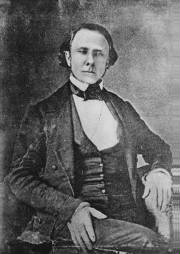
|
| (Cherokee Chief) |
There were some exceptions to
removal. Perhaps 100 Cherokees evaded the U.S.
soldiers and lived off the land in Georgia
and other states. Those Cherokees who lived on private, individually owned lands (rather than communally owned tribal land)
were not subject to removal. In North Carolina, about 400 Cherokees, known as the Oconaluftee Cherokee, lived on land in the
Great Smoky Mountains owned by a white man named William Holland Thomas (who had been adopted by Cherokees as a boy), and were thus not subject to removal.
Added to this were some 200 Cherokee from the Nantahala area allowed to stay after assisting the U.S. Army hunt down and capture
the family of the old prophet Tsali (Tsali died by firing squad). These North Carolina Cherokees became the Eastern
Band of the Cherokee Indian Nation.
(Left) William Holland Thomas (North Carolina state senator, Cherokee chief, Confederate colonel)
lobbied Washington for the Cherokee to remain in North Carolina and was even on the scene during the 1838 Trail of Tears
and persuaded General Winfield Scott, the Indian removal enforcement officer, to allow the Cherokee hiding in the North
Carolina mountains to also remain. Without Thomas's intervention at both fronts, there would not be a single Cherokee
in western North Carolina. Thomas was our Oscar Schindler, and his significance is reflected with the existence of the present-day
Eastern Band of Cherokee Indians.
The rare and sought after
"Trail of Tears" variety of bean is very productive and was grown by the Cherokee before the resettlement. The Cherokee were
able to preserve this heirloom variety of bean during the upheaval.
The Trail of Tears is generally
considered to be one of the most regrettable episodes in American history. To commemorate the event, the U.S. Congress designated
the Trail Of Tears National Historic Trail in 1987. It stretches for 2,200 miles (3,540 km) across nine states.
In 2004, Senator Sam Brownback
(Republican from Kansas) introduced a joint resolution (Senate Joint Resolution 37) to “offer an apology to all Native
Peoples on behalf of the United States” for past “ill-conceived policies” by the United States Government
regarding Indian Tribes. The United States Senate has yet to take action on the measure.
(Sources listed at bottom of page)
NEW! Recommended Viewing: We Shall Remain (PBS)
(DVDs) (420 minutes). Midwest Book Review: We Shall Remain is a three-DVD thinpack set collecting five documentaries from
the acclaimed PBS history series "American Experience", about Native American leaders including Massasoit, Tecumseh, Tenskwatawa,
Major Ridge, Geronimo, and Fools Crow, all who did everything they could to resist being forcibly removed from their land
and preserve their culture. Continued below...
Their strategies
ranged from military action to diplomacy, spirituality, or even legal and political means. The stories of these individual
leaders span four hundred years; collectively, they give a portrait of an oft-overlooked yet crucial side of American history,
and carry the highest recommendation for public library as well as home DVD collections. Special features include behind-the-scenes
footage, a thirty-minute preview film, materials for educators and librarians, four ReelNative films of Native Americans sharing
their personal stories, and three Native Now films about modern-day issues facing Native Americans. 7 hours. "Viewers will
be amazed." "If you're keeping score, this program ranks among the best TV documentaries ever made." and "Reminds us that
true glory lies in the honest histories of people, not the manipulated histories of governments. This is the stuff they kept
from us." --Clif Garboden, The Boston Phoenix.
Recommended
Viewing: The Trail of Tears: Cherokee Legacy (2006), Starring: James Earl Jones and Wes Studi; Director: Chip Richie, Steven R. Heape.
Description: The Trail Of Tears: Cherokee Legacy is an engaging two
hour documentary exploring one of America's darkest periods in which President Andrew Jackson's Indian Removal Act of 1830 consequently
transported Native Americans of the Cherokee Nation to the bleak and unsupportive Oklahoma
Territory in the year 1838. Deftly presented by the talents of Wes Studi
(The Last of the Mohicans, Dances With Wolves, Bury My Heart at Wounded Knee, Crazy Horse,
500 Nations, Comanche Moon), James Earl Jones, and James Garner. Continued below...
The Trail Of
Tears: Cherokee Legacy also includes narrations of famed celebrities Crystal Gayle, Johnt Buttrum, Governor Douglas Wilder,
and Steven R. Heape. Includes numerous Cherokee Nation members which add authenticity to the production… A welcome DVD
addition to personal, school, and community library Native American history collections. The Trail Of Tears: Cherokee Legacy
is strongly recommended for its informative and tactful presentation of such a tragic and controversial historical occurrence
in 19th century American history.
Recommended Reading: Trail of Tears: The Rise and Fall of the Cherokee Nation. Library
Journal: One of the many ironies of U.S. government
policy toward Indians in the early 1800s is that it persisted in removing to the West those who had most successfully adapted
to European values. As whites encroached on Cherokee land, many Native leaders responded by educating their children, learning
English, and developing plantations. Such a leader was Ridge, who had fought with Andrew Jackson against the British. Continued
below...
As he and other Cherokee leaders grappled with the issue of moving, the
land-hungry Georgia legislators, with the aid of Jackson, succeeded in ousting the Cherokee from their land, forcing
them to make the arduous journey West on the infamous "Trail of Tears." Mary B. Davis, Museum of American Indian Lib., New
York, Copyright 1988 Reed Business Information, Inc.
Recommended
Reading: After the Trail of Tears: The Cherokees' Struggle for Sovereignty, 1839-1880. Description: This powerful narrative traces the social, cultural, and political history of the Cherokee Nation during the forty-year
period after its members were forcibly removed from the southern Appalachians and resettled in what is now Oklahoma. In this master work, completed just before his death, William McLoughlin not only
explains how the Cherokees rebuilt their lives and society, but also recounts their fight to govern themselves as a separate
nation within the borders of the United States.
Continued below...
Long regarded
by whites as one of the 'civilized tribes', the Cherokees had their own constitution (modeled after that of the United
States), elected officials, and legal system. Once re-settled, they attempted to reestablish
these institutions and continued their long struggle for self-government under their own laws—an idea that met with
bitter opposition from frontier politicians, settlers, ranchers, and business leaders. After an extremely divisive fight within
their own nation during the Civil War, Cherokees faced internal political conflicts as well as the destructive impact of an
influx of new settlers and the expansion of the railroad. McLoughlin conveys its history to the year 1880, when the nation's
fight for the right to govern itself ended in defeat at the hands of Congress.
Recommended
Reading: The Cherokee Removal:
A Brief History with Documents (The Bedford
Series in History and Culture) (Paperback). Description: This book tells the compelling story of American ethnic cleansing
against the Cherokee nation through an admirable combination of primary documents and the editors' analyses. Perdue and Green
begin with a short but sophisticated history of the Cherokee from their first interaction with Europeans to their expulsion
from the East to the West; a region where Georgia, North
Carolina, Tennessee, and Alabama
connect Continued below...
The reader
is directed through a variety of documents commenting on several important themes: the "civilizing" of the Cherokee (i.e.
their adoption of European culture), Georgia's leading role in pressuring the Cherokee off their land and demanding the federal
government to remove them by force, the national debate between promoters and opponents of expulsion, the debate within the
Cherokee nation, and a brief look at the deportation or forced removal. Conveyed in the voices of the Cherokee and the
framers of the debate, it allows the reader to appreciate the complexity of the situation. Pro-removal Americans even made
racist judgments of the Cherokee but cast and cloaked their arguments in humanitarian rhetoric. Pro-emigration Cherokee harshly
criticize the Cherokee leadership as corrupt and possessing a disdain for traditional Cherokee culture. American defenders
and the Cherokee leadership deploy legal and moral arguments in a futile effort to forestall American violence. “A compelling
and stirring read.”
Recommended
Reading: James
Mooney's History, Myths, and Sacred Formulas of the Cherokees (768 pages). Description: This incredible volume collects the works of the early anthropologist James Mooney who did extensive studies of the
Eastern Cherokee Nation (those who remained in Appalachia) at the turn of the century. The introduction is by Mooney's biographer
and gives a nice overview of both Mooney and the Cherokee Nation, as well as notes on Mooney's sources. It then goes straight
into the first book "Myths of the Cherokee", which starts with a history of the Cherokee Nation. Continued below...
It progresses
from the earliest days, through de Soto, the Indian wars, Tecumseh, the Trail of Tears, the Civil War
and ultimately to 1900. Continuing, it explores Cherokee mythology and storytellers. This book is truly monumental in its
scope and covers origin myths, animal stories, Kanati and Selu, the Nunnehi and Yunwi'Tsundi (little people), Tlanuwa (thunderbirds),
Uktena (horned water snake), interactions with other Nations and numerous other myths, as well as local legends from various
parts of the Southeast (North Carolina, Tennessee, Georgia, etc). There is also a section of herbal lore. Mooney closes with
a glossary of Cherokee terms (in the Latin alphabet rather than the Sequoya Syllabary) and abundant notes. We advance to the
next book, Sacred Formulaes of the Cherokee, which covers a number of magical texts amongst the Cherokee Nation. This book
does a wonderful job talking about such manuals, mentioning how they were obtained, going into depth about the Cherokee worldview
and beliefs on magic, concepts of disease, healing ceremonies, practices such as bleeding, rubbing and bathing, Shamanism,
the use of wording, explanations of the formulae and so forth. It then gives an amazingly varied collection of Cherokee formulae,
first in the original Cherokee (again, in the Latin alphabet) and then translated into English. Everything from healing to
killing witches, to medicine for stick ball games, war and warfare. Both books include numerous photographs and illustrations
of famous historical figures, Cherokee manuscripts and petroglyphs and a map of Cherokee lands. Again, this is a truly massive
book and even today is considered one of the essential writings of Cherokee religion. Anyone with an interest in the subject,
whether anthropologist, descendant of the Cherokee or just a curious person interested in Native culture, should definitely
give this book a read. I highly recommend it.
Sources: Anderson,
William L., ed. Cherokee Removal: Before and After. Athens, Georgia: University of Georgia Press, 1991; Carter,
Samuel. Cherokee Sunset: A Nation Betrayed. New York: Doubleday,
1976. ISBN 0-385-06735-6; Ehle, John. Trail of Tears: The Rise and Fall of the Cherokee Nation. New York: Doubleday, 1988. ISBN 0-385-23953-X; Fitzgerald, David G. and King, Duane E.,
The Cherokee Trail of Tears, Graphic Arts Books, Portland, OR, 2005; Foreman, Grant. Indian Removal: The Emigration of the
Five Civilized Tribes of Indians. Norman, Oklahoma: University of Oklahoma Press,
1932, 11th printing 1989. ISBN 0-8061-1172-0; Prucha, Francis Paul. The Great Father: The United States Government and the American Indians. Volume I. Lincoln,
Nebraska: University of Nebraska Press, 1984. ISBN 0-8032-3668-9; Remini, Robert V. Andrew Jackson and his Indian
Wars. New York: Viking, 2001. ISBN 0-670-91025-2; Wallace,
Anthony F.C. The Long, Bitter Trail: Andrew Jackson and the Indians. New York:
Hill and Wang, 1993. ISBN 0-8090-1552-8 (paperback); ISBN 0-8090-6631-9 (hardback); Anderson, William L., ed. Cherokee Removal:
Before and After. Athens, Georgia: University of Georgia Press,
1991; Carter, Samuel. Cherokee Sunset: A Nation Betrayed. New York:
Doubleday, 1976. ISBN 0-385-06735-6; Foreman, Grant. Indian Removal: The Emigration of the Five Civilized Tribes of Indians.
Norman, Oklahoma: University
of Oklahoma Press, 1932, 11th printing 1989. ISBN 0-8061-1172-0; King,
Duane and Fitzgerald, David G., The Cherokee Trail of Tears, Graphic Arts Center Publishing Company, Portland, OR, 2007. ISBN
1-55868-905-3; Wallace, Anthony F.C. The Long, Bitter Trail: Andrew Jackson and the Indians. New York: Hill and Wang, 1993. ISBN 0-8090-1552-8 (paperback); ISBN 0-8090-6631-9 (hardback);
National Park Service; Library of Congress; 1835 Treaty of New Echota; 1830 Indian Removal Act; Winfield Scott's Address to
the Cherokee Nation, May 10, 1838; Winfield Scott's Order to U.S. Troops assigned to the Cherokee Removal, May 17, 1838; Removal
of the Indians, by Lewis Cass, January 1830; Cherokee Indian Removal Debate U.S. Senate, April 15-17, 1830; Elias Boudinot’s
editorials in The Cherokee Phoenix, 1829-31; Trail Of Tears National Historic Trail; New Echota Historic Site; Trail of Tears
Commemorative Park, Hopkinsville KY; Cherokee Nation, Oklahoma; Eastern Band of Cherokee Indians, North Carolina; Burnett,
John G. 1978 "The Cherokee Removal through the Eyes of a Private Soldier." Journal of Cherokee Studies 3 (Summer): 180-85;
Buttrick, Daniel S. 1838-39 Diary. Houghton Library, Harvard University;
Cannon, B. B. 1978 "An Overland Journey to the West (October-December
1837)." Journal of Cherokee Studies 3 (Summer): 166-73; Deas, Lt. Edward 1978 "Emigrating to the West by Boat (April-May 1838)."
Journal of Cherokee Studies 3 (Summer): 158-63; Foreman, Grant 1932 Indian Removal -The Emigration of the Five Civilized Tribes
of Indians. Norman: University
of Oklahoma Press; _____. 1932 The Five Civilized Tribes: A Brief History
and a Century of Progress. Norman: University
of Oklahoma Press; Henegar, H. B. 1978 "Recollections of the Cherokee
Removal." Journal of Cherokee Studies 3 (Summer): 177-79; Hudson, Charles 1976 The Southeastern Indians. Knoxville:
University of Tennessee
Press; King, Duane H., and E. Raymond Evans, ed. 1978 "The Trail of Tears: Primary Documents of the Cherokee Removal." Journal
of Cherokee Studies 3 (Summer): 131-90; King, Duane H. 1988 Cherokee Heritage: Official Guidebook to the Museum of the Cherokee
Indian. Cherokee, NC: Cherokee Communications; Lightfoot, B. B. 1962 "The Cherokee Emigrants in Missouri, 1837 -1839." Missouri Historical Review 56 (January):
156-67; Morrow, W. I. I.
1839 Diary. Western Historical Manuscript Collection, University of Missouri, Columbia; Mooney, James
1975 Historical Sketch of the Cherokee. Chicago: Aldine Publishing
Company; Moulton, Gary E. 1978 John Ross: Cherokee Chief. Athens: University of Georgia Press; Perdue, Theda
1989 The Cherokee. New York: Chelsea House Publishers. Prucha.
Francis Paul 1969 "Andrew Jackson's Indian Removal Policy: A Reassessment." Journal of American History 56 (December): 527-39;
Scott, Winfield 1978 "If Not Rejoicing at Least in Comfort." Journal of Cherokee Studies 3 (Summer): 138-42; Starr, Emmet
1921 History of the Cherokee Indians and Their Legends and Folk Lore. Oklahoma City:
The Warden Company; Thornton, Russell 1984 "Cherokee Population Losses during the Trail of Tears: A New Perspective and a
New Estimate." Ethnohistory 31 (4): 289-300. 1990 The Cherokees: A Population History. Lincoln:
University of Nebraska
Press; Wilkins, Thurman 1986 Cherokee Tragedy: The Ridge Family and the Decimation of a People. Norman:
University of Oklahoma
Press; Woodward, Grace Steele 1963 The Cherokees. Norman: University of Oklahoma Press.
|

